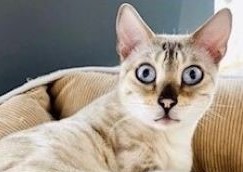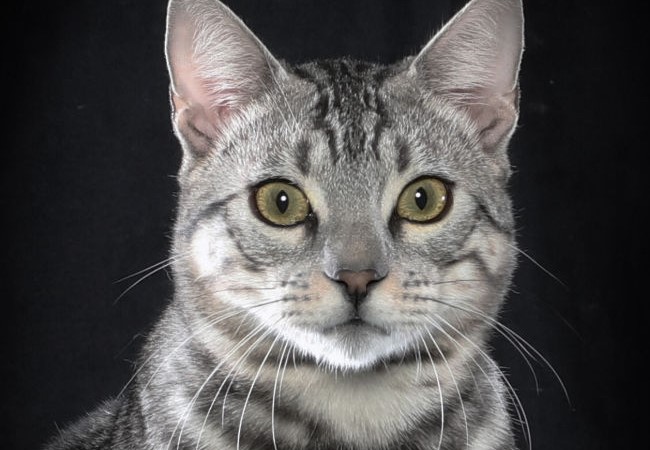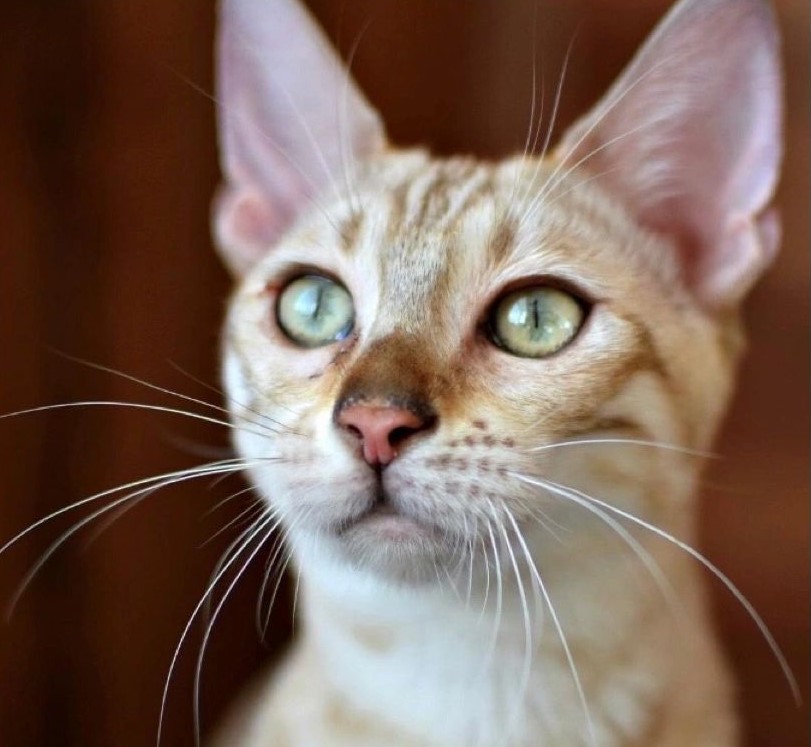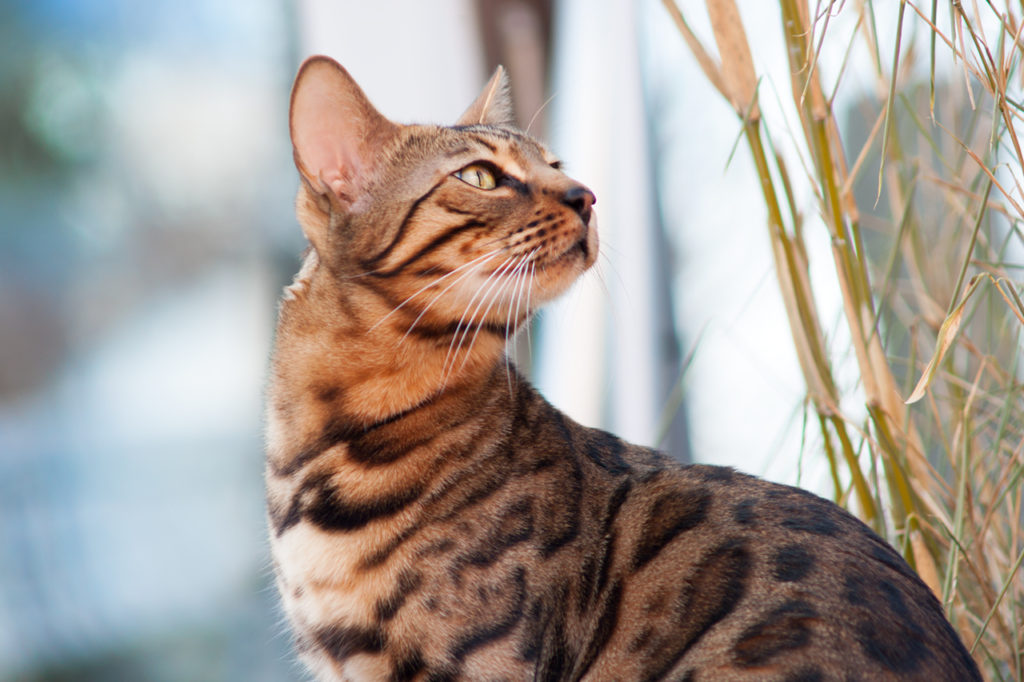This article will tell you everything you need to know about blue eyed Bengal cats.
When looking for a Bengal of my own, eye colour wasn’t something I really considered, but then I wasn’t fully aware of all Bengal varieties and eye colour combinations possible.
This guide will tell you exactly which Bengal cats have blue eyes plus information on Bengal eye colour in general.
What You Will Discover:
- Which Bengal cats have blue eyes
- What leads to blue eyed Bengal varieties
- All the different eye colourings Bengal cats can have
Topic Overview
Bengals can have eyes that are blue, green, gold, yellow, hazel and orange/gold.
The colour of a Bengal’s eyes is determined heavily by the genetics of the non-Bengal domestic cat introduced into breeding lines.
Some fur/eye colour combinations are possible; others are not, but depending on the genes carried by the parents, it’s possible for Bengal kittens in the same litter to have eyes that differ in colour.
So let’s dive straight into the subject of this article, blue eyed Bengal cats…
Blue Eyed Bengal Cats
The Bengal cat breed is a result of an original cross between the Asian leopard cat and a domestic cat.
Asian leopard cats have dark golden brown to greyish eyes.
As breeding has expanded, eye colour diversity has been introduced by using different breeds of domestic cat.
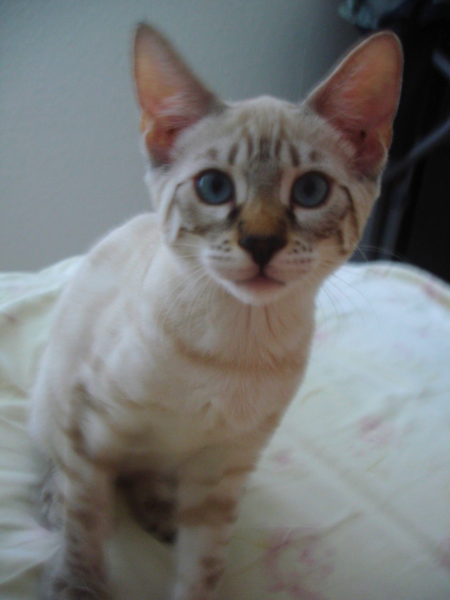
With most Bengals having eyes that aren’t coloured blue, it can be unusual to see one with that is blue eyed.
But you’ll only see certain Bengals with blue eyes, as we’ll discuss below…
Snow Bengals
Briefly, snow Bengals came into being when a Siamese cat was introduced into the Bengal breeding program.
From the Siamese, they acquired a pale, white base fur which is darker around the face, feet and tail, that is, the body’s extremities.
This characteristic is known as ‘pointing.’
Another trait also passed from the Siamese into the Bengal breed.
And that was blue eyes.
For a more in depth look at snow Bengals, take a look at Snow Bengal Cats: The Most Definitive Guide.
However, not all snow Bengals are blue eyed.
In fact, it is only one sub-group…
Snow Seal Lynx
The snow Bengal family is split into the 3 types below:
- Snow Seal Lynx
- Snow Seal Mink
- Snow Seal Sepia
Genetics determines which of the 3 types a snow Bengal kitten will fall into- specifically, whether they possess Siamese or Burmese cat genes or a combination of both.
As we’ve mentioned, the snow seal lynx line contains Siamese genes.
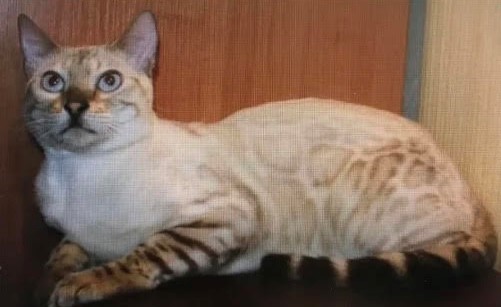
The snow lynx Bengal is considered to have the palest, whitest fur of all the snow Bengal types.
This contrasts with a darker face, tail, feet and ears- although not as dark as those found on a Siamese.
It is because of this Siamese ‘pointing’ pattern that you’ll see the snow seal lynx also referred to as the ‘snow seal lynx point.’
Snow seal lynx kittens are born completely white and take a few months to develop their final fur pattern and colouration.
Blue Eyes
Unique to snow seal lynx Bengals are blue eyes.
Therefore, if you see any blue eyed Bengals, these will be snow seal lynxes and ONLY snow seal lynxes, although there are slight exceptions, which we will see later.
Genetics
The blue eyed trait it owes to the Siamese (below) and in genetic terms, is recessive.
This means an individual needs 2 copies of the gene coding for eye colour (one from its mother; one from its father) in order for it to be exhibited phenotypically/physically.
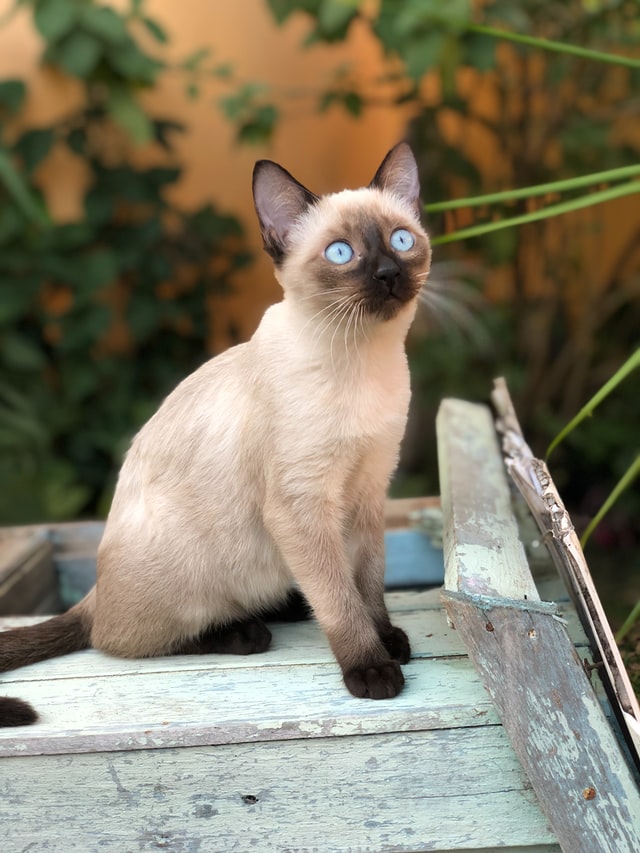
It also means breeders must ensure that any lines they are breeding from/with include cats that are at least carriers of this recessive gene in order to produce (some) Bengal kittens with blue eyes.
Or they could just stick to snow lynx- snow lynx pairings… it’d be easier…
Now as promised the, (slight) exceptions to the ‘only snow lynx Bengals have blue eyes’ rule…
Silver Seal Lynx
A silver Bengal cat, (which I won’t go into too much detail about as you can find all you need in this article: Silver Bengal Cats: The Definitive Guide) carries an inhibiter gene that produces a silver coloured looking coat.
Silver Bengals can be crossed with snow Bengals to produce a hybrid of the two- essentially a snow Bengal with the silver inhibitor gene it possesses from a silver Bengal cat.
The offspring then are similarly named to the snow Bengals listed above:
- Silver Seal Lynx
- Silver Seal Mink
- Silver Seal Sepia
As you’ve probably guessed, like its pure snow counterpart, it is the silver seal lynx that always only has blue eyes.
There is another small caveat to this too however…
Charcoal
Charcoal Bengals are those which have inherited the charcoal pattern trait.
Typically, this gives a Bengal a dark face (‘Zorro’) mask, a dark ‘cape’ running along the back, and darker spots on its fur.
Interestingly, this trait is passed down independently of colour.
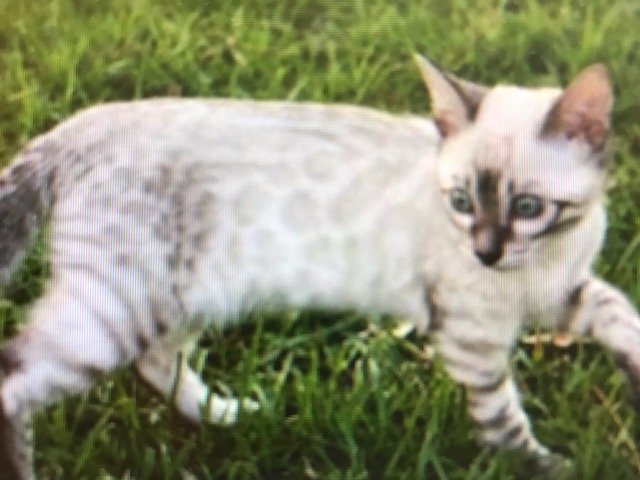
But what does this mean with regards to blue eyes?
Well, as the charcoal trait is not linked to colour, then it’s possible to have both a charcoal snow seal lynx (above) AND a charcoal silver seal lynx.
Both will be darker in appearance than their non-charcoal counterparts, but both will have blue eyes.
Are Blue Eyed Bengal Cats Rare?
With blue eyes being a recessive trait, this makes blue eyed Bengals less common, or if you prefer, rarer, than those with eyes of other colours.
Being rarer, blue eyed Bengals are often more sought after.
How Big Do Blue Eyed Bengal Cats Get?
Eye colour and size are not linked, therefore, blue eyed Bengals are no bigger or smaller than Bengal cats that have different eye colours.
For more on Bengal cat size, see How Big Do Bengal Cats Get? The Beginner’s Guide.
How Long Do Blue Eyed Bengal Cats Live For?
Again, there is no link between eye colour and life expectancy which means a blue eyed Bengal cat has an average life span of roughly 15 years (see How Long Do Bengal Cats Live? 12 Excellent Ways To Boost Life Expectancy)
Other Bengal Cat Eye Colours
Whilst researching this subject, it was difficult to pin down the exact range of eye colours Bengal cats can have as some sources mentioned eye colours that others didn’t (yellow and hazel for example).
However, I’ve done my best to summarise my findings below.
Green Eyed Bengal Cats
You will find that green eyes are widespread in the Bengal breed.
In fact, they can be found in Bengals of all the main fur colour/breed types.
The brown Bengal, snow sepia, silver (except the silver snow lynx), blue Bengal cat and melanistic (black) can all have green eyes.
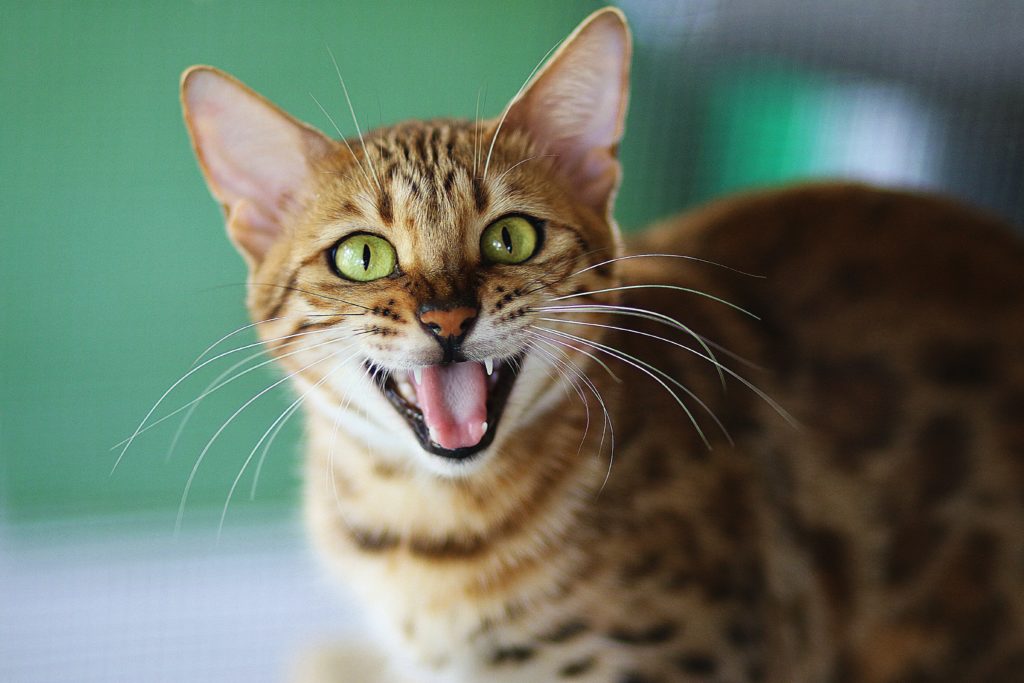
The snow mink Bengal cat has bluey-green or aqua eyes (although one site mentioned they can have golden or straight green eyes).
Green eyes come from lines of Bengals where breeding involved domesticated cats that also had green eyes.
The Egyptian Mau and Abyssinian cat are examples.
Gold/Orange Eyed Bengal Cats
Gold/orange eyes (depending on preference) are also common within the Bengal breed.
They can be found with all the breed variants listed under green eyes, although when it comes to a snow Bengal cat, it is the snow sepia that you will usually see with orangey/gold coloured eyes (although some can have green eyes too as mentioned).
Hazel Eyed Bengal Cats
For those who are unsure, hazel colouring can be described as a mixture of brown, green and gold.
According to one source, these are prominent in only blue and melanisitic/black Bengals.
Yellow Eyed Bengals
Apparently, these are found in pretty much all the Bengal breed types, but out of the snows, only a snow sepia can have yellow eyes.
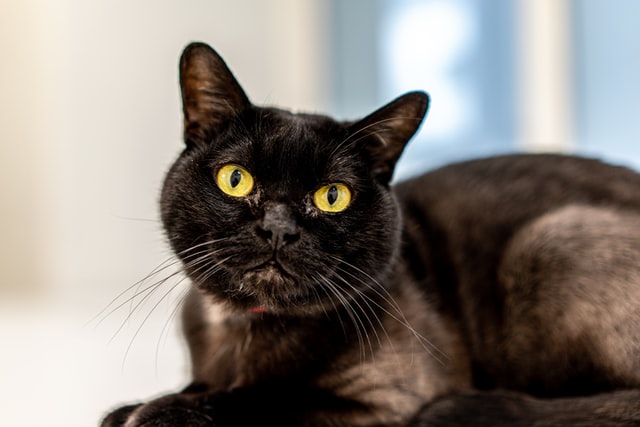
Domestic cats used to breed Bengals with yellow eyes have included the Bombay (above) and the British short hair.
Bengal Eye Colour Changes Over Time
A Bengal cat’s final eye colour isn’t necessarily that which it is born with.
In fact, a kitten’s eyes can change colour more than once during the first 3 months or so of its life.
The majority of kittens actually start out with dark blue eyes, and after a few weeks, begin to change colour.
During this period it’s possible to see a range of other colours start to appear including orange/gold, brown, yellow and green.
At approximately 12 weeks old, a kitten’s eye colour will have fully developed and should remain the same throughout its adult life.
Blue eyed cats will also start out their lives with blue eyes, but theirs will be a lighter blue than other kittens.
Blue Eyed Bengal Cats Summary
Bengal cats are known for having striking fur patterns and colours.
Those with blue eyes can take this striking quality a level higher.
And it is only snow seal lynx point and silver seal lynx Bengals (plus or minus charcoal characteristics) that will have blue eyes.
And they can thank the Siamese breed for those.
Additionally, the rarity of these blue eyed Bengals (owning to recessive genetics) can make them much sought after- and therefore probably more expensive.
Oddly enough, I hadn’t really paid much attention to my own brown Bengal cat’s eye colour until writing this article.
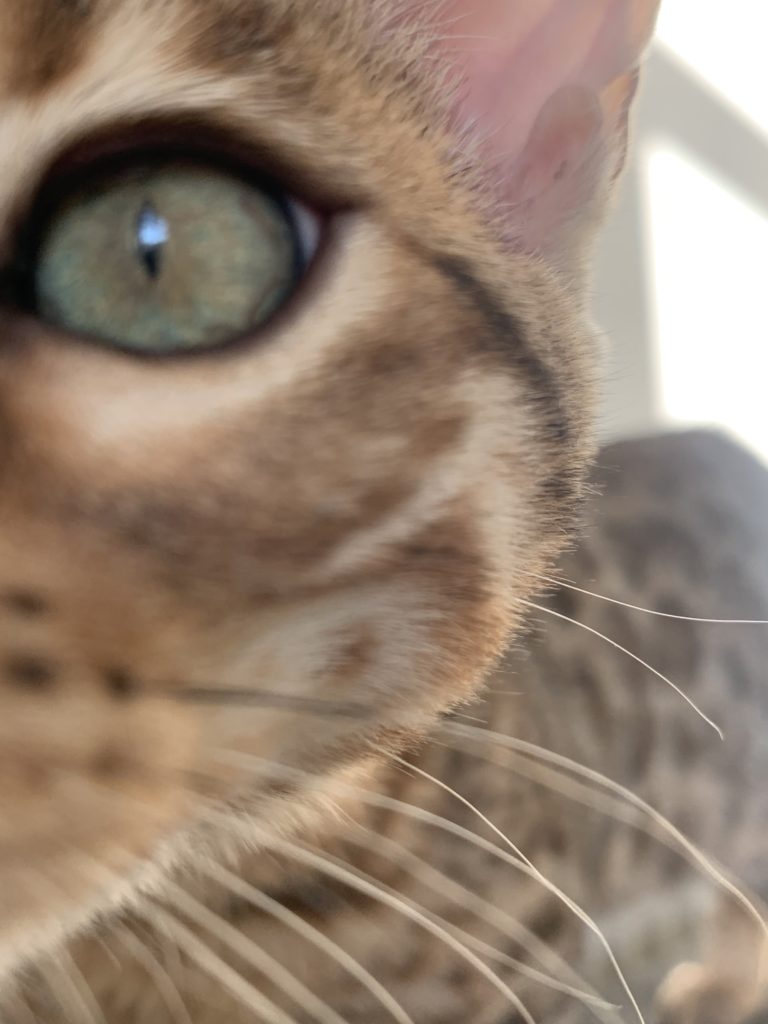
If you’re interested, they’re the colour above- a sort of green, although being called Hazel it would have been more appropriate had they been the colour of the same name…
My thanks to Dawn Schwiebert from Exotic Bengals of San Diego for providing some of the snow Bengal photos seen in this article.
Further Reading:

